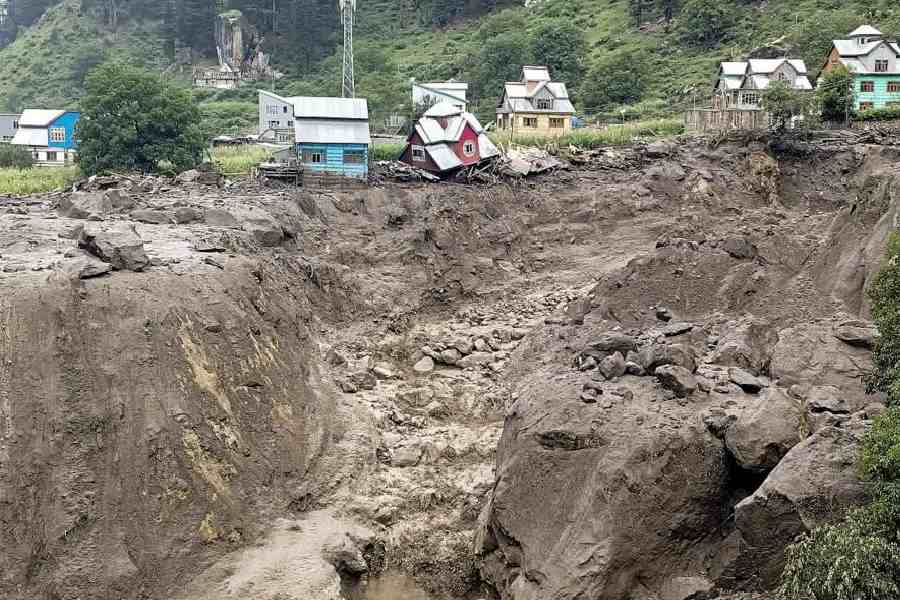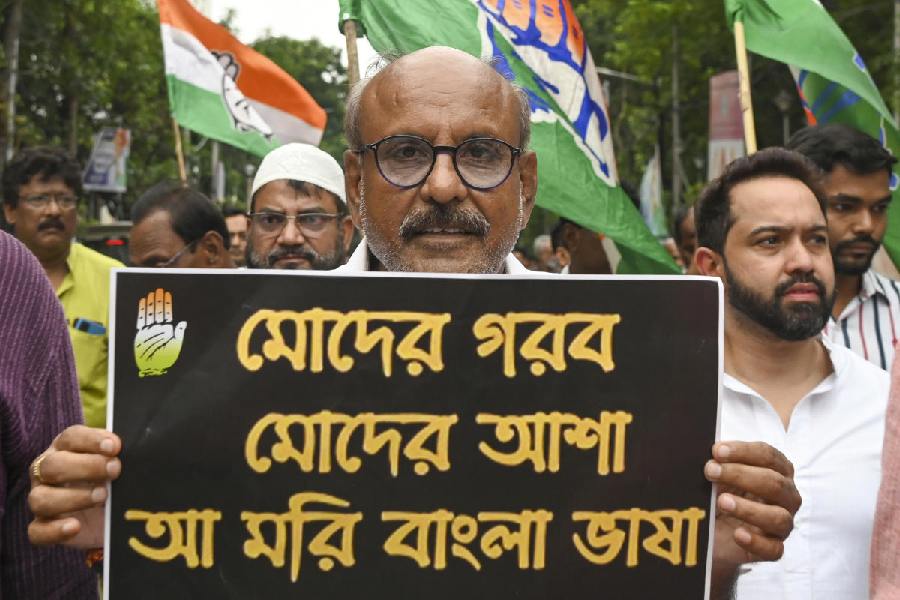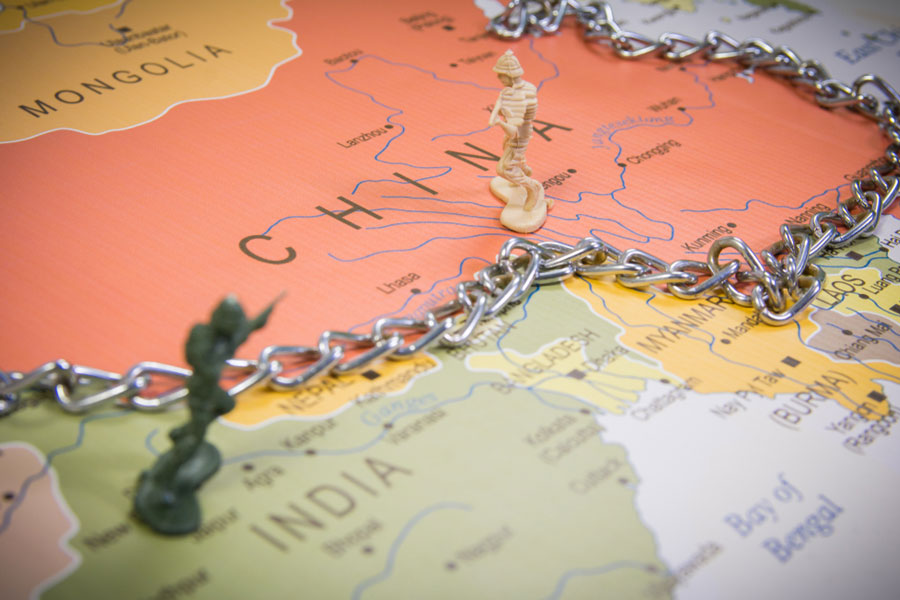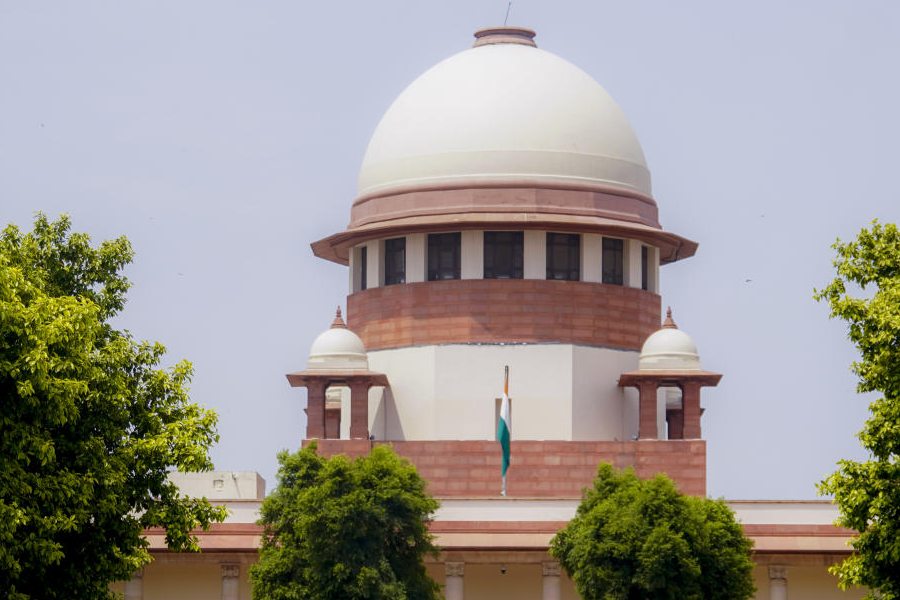
Stretches of white sand, an aquamarine sea, plenty of sunshine, pretty, if not prettier than the islands of Southeast Asia or the Caribbeans - the Andaman Islands are quite the dream destination. So, while walking along its wide and pristine beaches, it jars the senses to come across signs like "caution" and "prohibited".
These boards are actually all over the place - along the roads, by the creeks, near the nullahs - warning tourists of crocodiles.
Despite the ubiquitous signs, forest department officials play down the threat from crocodiles. "The statistics are certainly not that alarming. Only 10 people have been attacked by crocodiles in the past three years; three of the victims died," says Naveen Kumar, deputy conservator of forests (wildlife division). "Compare this with the number of crocodile deaths in the coastal regions of Odisha, Andhra, Kerala, Tamil Nadu, Gujarat or Bengal."
Alarming or not, crocodile attacks are a worrying trend. Islanders, especially tour operators and divers whose business it is to wander around the waters and who have seen a friend or a colleague being attacked or killed, do not find any comfort in statistics.
"Two years ago, on Independence Day a resident from nearby Dhanikhari was mauled. Before that a young diver, too, was attacked," says tour guide Deepak Das. He will tell you how, in the second case, the diver managed to escape alive after a fellow diver attacked the reptile on the eye, forcing it to loosen its grip momentarily. This was near the Wandoor jetty, close to the gate of the Mahatma Gandhi Marine National Park on the southern tip of the Andamans. Last September, at the ebb of the monsoons, a 63-year-old woman in South Andaman and before that, a home guard in Wandoor beach died in croco-dile attacks.

There's something here that smacks of an ecological imbalance. Further enquiries lead us to what is possibly the most immediate and a major cause of disruption - the 2004 tsunami.
The tsunami, which is basically a mega undersea earthquake, resulted in drastic geological upheavals. The tectonic plates or pieces of the Earth's crust were pushed up by a couple of metres in some places and pushed down in some others. The geological change pushed salt water into human habitats, creating new water bodies and salt-water creeks.
The estuarine or saltwater crocodile - Crocodilus porosus, known as "salty" to herpetologists - is a common species throughout the Andaman and Nicobar Islands. As is obvious from its name, it usually resides in saline and brackish mangrove swamps, estuaries, deltas, lagoons and lower stretches of rivers. The tsunami brought the Andamans' salties closer to human habitations.
Now, salties are formidable and opportunistic predators and love to ambush their prey, drown them and thereafter, devour them. Along the southern coast from Andhra to Kerala, which was also their habitat, they were hunted down so aggressively that by the 1940s they were on the verge of extinction. Poachers in the Andamans continued to make a bounty out of crocodile skin and meat until the Wild-life Protection Act was enforced in the mid-1970s.
Tarun Nair is a conservation biologist and member of the Crocodile Specialist Group of the International Union for Conservation of Nature. He disagrees with the tsunami theory and also points out that the saltwater crocodile is equally at home in freshwater habitats. He does not quite agree to the increase in incidence of the human-crocodile conflict either, and attributes the hoopla to "sudden media attention".
According to a survey by herpetologist Romulus Whitaker of the Madras Crocodile Bank, the Andamans were doing fine till the 1970s, when there was a large-scale migration of people from mainland India. Whitaker's survey reveals that the new settlers encroached on nesting sites for agriculture. Crocodiles were also killed for their skin, fat and gall bladders and their nests rifled for eggs.
"After 1975, there were widespread conservation efforts to save the species across India, including the Andaman and Nicobar Islands. As a result, by the 1990s the population of crocodiles was found to be recovering," says Naveen Kumar of the forest department.
This would have been a good thing, except that it was all happening in a shrunken habit. With the rise in tourism and civil construction and more land allocation for defence establishments and fishing, the crocodile habitats were greatly reduced. Some of the development has occurred within 200 to 500 metres from the sea in contravention to the prescribed coastal regulatory zone rules.
As the salties recovered their lost numbers, encounters with humans increased.
In April 2010, a crocodile killed an American tourist on the picturesque Radhanagar beach in Havelock Island. It was an unusual incident because the attack came in open water over a coral reef far away from a crocodile habitat. This was quite unlike their typical behaviour - hiding under the cover of mangroves or other thick coastal vegetation by day and emerging to hunt by night.
The crocodile was identified, captured and shifted to a zoo in Port Blair. Since then, other crocodiles have been captured and relocated away from human habitation.
S. Senthil Kumar, former joint secretary (environment, science, technology & wildlife) in the Andaman and Nicobar Administration, was in the islands at the time. One reason crocodiles attack is that they are actually defending their territory, he explains. "Especially, during the breeding season from May to June, when the female of the species is laying eggs and defending nests. Dominant males are also likely to defend individual territories."
Senthil Kumar argues that relocating aggressive crocodiles is just a temporary fix. Another male will eventually dominate the creek, and may again be a threat to tourists.
"The best solution is to change people's behaviour," says Naveen Kumar of the forest department. "We have installed nets in some of the beaches and demarcated safe swimming zones for tourists and residents. Patrolling teams are being deployed and residents have been cautioned against indiscriminate littering and garbage disposal. Warning signs have been erected."
Indeed, the key to peaceful co-habitation of crocodiles and humans seems to be sensitisation. Since September there hasn't been a single attack in the islands. But how long is this peace to last along the beaches?










